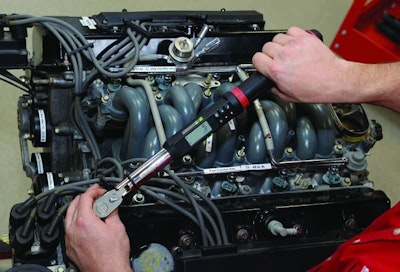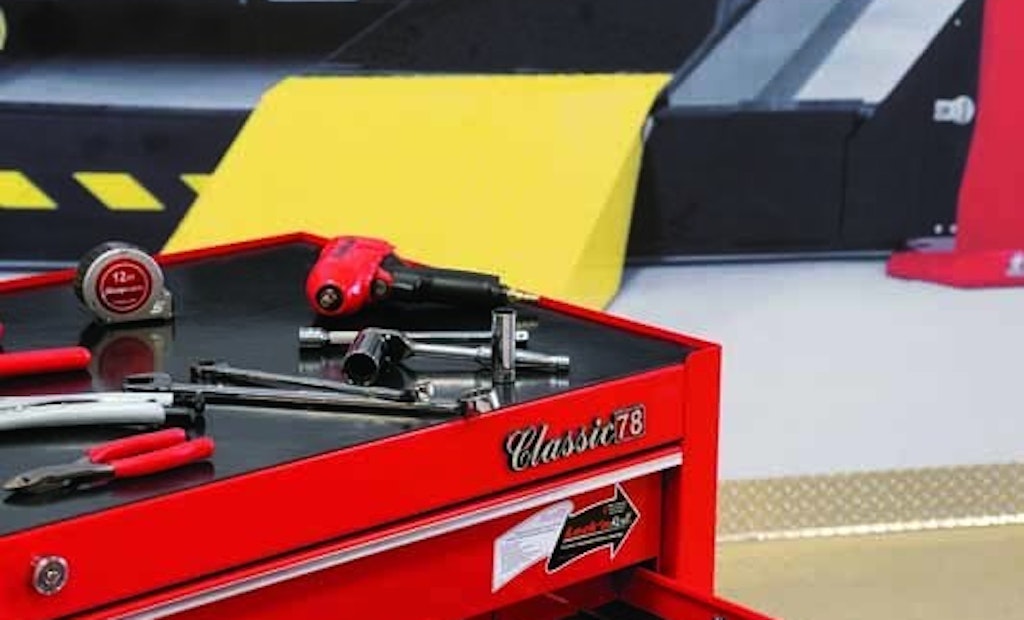Interested in Accessories?
Get Accessories articles, news and videos right in your inbox! Sign up now.
Accessories + Get AlertsThere’s something about the feel of a well-crafted hand tool. Perhaps it’s the weight, the finish, the design — or just knowing you can depend on it to get the job done time after time.
How do you know what brand and quality of tool is right for you? That depends on how often you use it and the job you’re performing. You don’t need a $100 hammer to hang a picture, but you wouldn’t want anything less than the best possible wrench when wrestling with a bolt in a confined engine compartment.
As any onsite installer who has spent a lot of time in the shop knows, not all tools are the same, but all will do the job they were intended to do. For starters, hand tools generally fall into three categories: professional, intermediate and consumer or DIY.
EVERYDAY USE
Professional-grade tools are made to be used every day — all day long. In short, they’re made to last. Snap-on is a brand that often comes to mind. They are the personal work tools of mechanics. These are the tools you don’t want to lend or leave laying around the shop — primarily because they’re not cheap. Keep in mind, professional in name does not mean professional in grade.
Intermediate, mid-tier-grade tools are often shared by everyone in the shop. While good in quality, they’re not on the same level as professional-grade tools. As a result, they are less costly to replace if lost or stolen. Keeping with the Snap-on name, Blue Point is the company’s mid-tier or mid-grade automotive brand. The company also owns Williams, a mid-grade tool designed for industrial use. They are not simply Snap-on tools rebranded.
Lastly are the retail or consumer-grade tools found in many big-box stores. They’re designed for infrequent use — the do-it-yourselfer or weekend warrior who needs a functional, relatively inexpensive product.
Each level of tool has numerous brands to choose from. But how do you know you’re getting the best value for your dollar?
PERSONAL PREFERENCE
Many old-schoolers point to weight and country of origin. Others insist on service and availability. In the end it comes down to personal preference: Do you like a soft or hard grip?
If you’re a professional mechanic and are happy with your tool performance, selection and service, you probably have no reason to change. But if you’re in charge of buying tools for the shop or are an occasional mechanic, you might be tempted to shop around.
Let’s start with country of origin. For years, “Made in the USA” was the gold standard. And many buyers still rely on it for their decision-making. Snap-on makes all of its flagship brand tools in the U.S., as does Armstrong Industrial Tools, a member of the Apex Tool Group. But that doesn’t mean you can’t find a good set of tools made on foreign soil.
“A lot of guys are very fervent; they want to buy products that are made in the USA,” says Jim Stewart, brand manager for GearWrench. “That’s why our company, Apex Tool Group, has brands like Armstrong that are made in the USA. They deliver a good quality, made-in-the-USA product if that’s all they want to buy. However, I work for GearWrench. We have our manufacturing done in Taiwan and China.
“Because we own the plant, we can develop the specs of the product. If it’s an ASME spec, we can go 200 or 150 percent above that; we can determine how strong we want to make it.
"We’ll test prototypes in our lab and do site testing. That means we end up with a well-designed product that should meet all of our specifications,’’ Stewart says. “On the manufacturing side, we can enforce quality control. Incoming materials get tested to make sure they meet specifications, and when it comes to forging and machining, there’s gauging to make sure the parts are to the size they should be. You can do all those tests when you own the plant, rather than buying from an unknown source.
“In short, if you want to buy USA, buy Armstrong. But if you’re willing to go for a good quality product from overseas, then GearWrench is a brand that will fit that requirement.”
A WEIGHTY DECISION
As for weight, heavier is not necessarily better, says John Ficcadenti, product manager, Snap-on Industrial.
“There are old-school mechanics who love a heavy tool because in their mind and in their experience, the heavier a tool is, the more reliable, dependable or strong it is. But when somebody has that tool in their hand for six, eight, 10 hours a day, you start dealing with the ergonomics — carpal tunnel, shoulder strain, wrist strain and elbow strain. Customers are beginning to understand the benefits of a lighter-weight tool. It doesn’t have to be heavy to be strong. We work with metallurgists on a daily basis to look at different materials that are lighter in weight but as strong as steel.”
A lifetime warranty can be another determining factor when buying tools. Think of it as insurance on your investment.
“It’s there if you ever need it,” Ficcadenti says. “But you don’t really want to utilize it. You want that tool to stand up to any and all conditions. Now, we know there are customers out there abusing tools and using them in ways they were not designed. For example, guys will put a cheater bar on the end of a ratchet to break a bolt loose. They’re really not supposed to be doing that. That not only compromises the safety of the individual using the tool but the people around him.”
Stewart says when it comes to warranties, lifetime or otherwise, it’s important to have a manufacturer that will stand behind the product and allow you to replace it where it was bought.
Ultimately, the most important qualifier when buying a tool is how well it helps you do the job.
If you’re working in tight quarters, a low-profile wrench might be a better fit or a multi-toothed drive might give you more socket movement, Stewart says.
“People used to be pretty happy with a 24- or a 36-tooth count. But now the standard is way above that. GearWrench had a 60-tooth until about three years ago and we upped that to an 84-tooth. That’s kind of our baseline tooth count now,” he says. “It gives you a much finer swing arch. And it obviously gives you much better access in tight spaces. We also have a 120XP ratchet, which has 120 positions. It gives you the bite you need when you’re in a really, really tight space.”
Tool tips:
Whenever you’re working with hand tools it’s a good practice to wear safety glasses. Gloves are also recommended but can be cumbersome in tight spaces. Whatever brand of tool you own, it will last longer if properly stored and care for. Here are a few tips to get the most life from your tools:
“On any job you do, you want to thoroughly inspect your tools before and after use — a broken tip on a screwdriver, for example; a rounded edge on a socket,” says John Ficcadenti, product manager, Snap-on Industrial.
“You always want to wipe them down and store them properly,” he says. “Put it back in its right place in your toolbox or drawer so the next time you’re ready to use it it’s ready to be used. If they’re your tools and you’re not sharing them with anybody else, you’re going to know you put your tools away in the right place in the proper order.”
Most chrome tools can be cleaned with a rag: wipe them off and put them away. Ratchets can be greased but shouldn’t be cleaned in solvent, it sucks the grease out, says Jim Stewart, brand manager for GearWrench.
“Impact sockets and pry bars can develop rust spots. Clean them with an oily rag or use a little WD-40,” he says.
In the case of a click-style torque wrench, loosen the spring before you store it. Turn it down to its lowest possible setting.









